Healthy Foods for Diabetes
Have you ever asked yourself if there are any real diabetic healthy foods?
Looking for the ultimate diabetes super foods?
Well, you can stop searching.
You have here a list of foods every diabetic should eat with no fear or limitation.
All of the healthy foods in this list have a low glycemic index (GI) and provide key nutrients that are absent in your diet such as: fiber, calcium, magnesium, potassium and vitamins A, C, and E.
Whole Grains
And the winner is: Pearled Barley!
Pearled barley has by far the lowest glycemic index of any grain ever tested, only 26.
But not only barley. You can look for bread made of grain which its GI is lower than wheat, such as: corn, soybeans, oat bran, and barley.
Meal suggestions:
Barley blended with milk and some cinnamon is a good low GI breakfast.
You can sweeten it with liquid artificial sweetener.
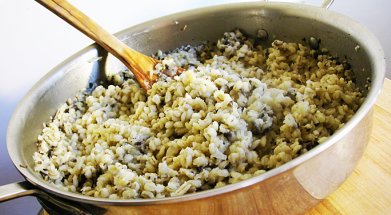
Another great low GI breakfast:
Mix 1/4 cup brown rice, 1/4 cup pearl barley, 1/4 cup rye and 1/4 cup lentils (admittedly not a grain!) with yogurt or milk.
Green Vegetables
Green vegetables are all high in vitamin C and fiber, and also contain vitamin A, iron and calcium.
In general, more nutrients are where the darker leaves of the green vegetables are.
Green vegetables are also a good source of enzymes when eaten fresh.
Enzymes function to more effectively break down food, allowing for absorption of more nutrients from healthy foods eaten and a more thorough elimination of parts of foods that are not useful to our bodies.
In short, enzymes in green vegetables will work in cooperation with your metabolism and ensure a healthy digestive system.
Sweet Potatoes
Do not confuse the sweet potato or batata which are our healthy foods with the regular white potato which is distinctively different.
Sweet potatoes are rich in starches, carbohydrates, fibers, and vitamins A, C, and B6.
They are great as a side dish, or fries, or boiled slices, or as a pie or a gourmet spread.
They can be served boiled, steamed, fried, baked or cooked by microwave.
Beans
Beans have a low glycemic index and contain complex carbohydrates, which are digested slowly.
These facts make beans a good choice for people needing to keep their blood sugar in the normal range.
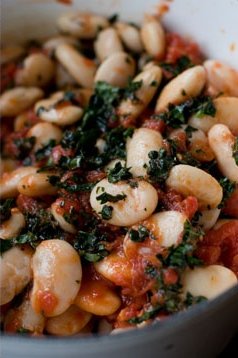
Beans and other legumes have all the nutrients now recognized as important in preventing heart disease, cancer and obesity.
They are high in complex carbohydrates, protein and fiber and they are extremely low in fat.
Beans are an important member of our healthy fodds list.
Beans are versatile and can be served in salads (hot or cold), with pasta and in vegetarian dishes, but also in casseroles with meat or poultry or with seafood.
And did I mention… Hot soups, chilis, appetizers and desserts.
More ideas for soups?
www.soups-and-sauces.com
Soups and Sauces you can make yourself. Fresh and healthy. Free recipes and lots of "how-to" help (including videos!) for the beginner and expert alike.
Omega-3 Fatty Acids
An interesting fact is that although most of the types of fat are bad for you, there are several fats that you clearly can't live without them.
One of them is omega-3 fatty acids, found in foods including walnuts, some fruits and vegetables, and coldwater fish such as salmon, herring, mackerel, sturgeon, and anchovies.
Omega-3s is one of our healthy foods and it can reduce the risk of the following health problems: heart disease, stroke, hypertension, depression, attention deficit hyperactivity disorder (ADHD), joint pain and other rheumatoid problems, as well as certain skin ailments.
Researches confirm that omega-3s can save the immune system and help protect us from an array of illnesses including Alzheimer's disease.
You can find more information in here.
Pumpkin Seeds and Meat
Pumpkin meat and seeds are both healthy foods for people with diabetes.
Pumpkin is an excellent source of vitamins A and C and potassium, and the seeds are high in fiber, vitamin B12, and polyunsaturated fatty acids (the good fats).
To maintain freshness, pumpkins should be stored in a cool, dry place until ready to use.
Pumpkins are very versatile in their uses for cooking, from the fleshy shell, to the seeds, and even the flowers. Most parts of the pumpkin are edible.
Smaller pumpkins have softer and tastier meat. The pumpkin can be boiled, baked, steamed, or roasted.
Tip: don't throw out the seeds. You can oven roast them. They are great as a low-carb snack or salad topping.
Pumpkin seed oil contains fatty acids that help maintain healthy blood vessels and nerves, and are loaded with essential fatty acids that help to maintain healthy blood vessels, nerves and tissues.
Citrus Fruits
The most well known examples of those healthy foods are the orange, the lemon, the grapefruit, and the lime, but there are much more such as the tangerine, the clementine, the pummelo, and the mandarin.
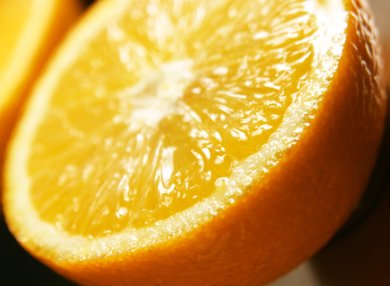
Citrus fruits are generally eaten fresh.
They are typically peeled and can be easily split into slices.
Their juices are in popular beverages, soft drinks and cocktails. They commonly can be found in salad dressings and squeezed over cooked meat or vegetables.
The fruits can be used as garnishes or in cooked dishes.
The citrus fruits main benefit is their vitamin C also known as ascorbic acid.
The vitamin C is required for strong gums and health body tissues and for the prevention of the scurvy disease.
Oranges, lemons, grapefruit and tangerines are great tasting, low calorie foods which are good sources of carbohydrates and fiber, and are low in sodium, cholesterol and fat.
Tomatoes
Tomatoes contain fiber, iron, protein, copper, magnesium and niacin.
Tomatoes are an excellent source of vitamin C, vitamin A, vitamin K, vitamin B1, vitamin B2, vitamin B6, and vitamin E.
But the most powerful armor the tomato provides us (and because of it the tomato is in our healthy foods list) is the Lycopene.
The Lycopene is a bright red carotene and a pigment, found in tomatoes and other red fruits & vegetables, such as red carrots, watermelons and papayas.
Our body uses it as an antioxidant which helps neutralize harmful free radicals.
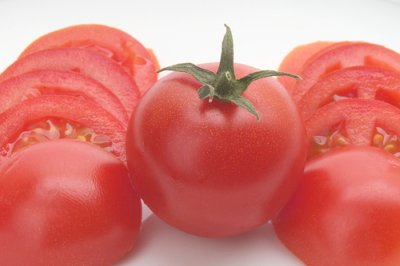
There are 72 different researches which show consistently that the more tomatoes and tomato products people eat, the lower their risks of several kinds of cancer.
Other health benefits of Lycopene are: prevents diabetes complications and cardiovascular system issues and disease, guards against aging of the skin, may prevent osteoporosis, and can assist with fertility problems in men.
Low-Fat Milk
You can find delicious-tasting low-carb milk available in your local supermarkets.
Studies show possible links between low-fat milk consumption and reduced risk of hypertension, heart disease, different kinds of cancer and obesity.
It also reduces the risk of insulin resistance and type 2 diabetes at overweight individuals who drink only low-fat milk.
Dairy products are known as healthy foods and they can help build strong bones and teeth.
In addition to calcium, many fortified dairy products are a good source of vitamin D.
Soy Milk
Soy milk is processed from soy beans through the use of varying manufacturing processes.
Soy milk contains about the same amount of protein as cow's milk and it can be made at home with traditional kitchen tools or with a soy milk machine.
Soy milk is in our healthy foods list since it has its benefits. The most important one is that soy milk is 100% Lactose-Free, meaning it's a great alternative to those whom suffer from lactose intolerance.
Unlike cow's milk, it has little saturated fat and no cholesterol, it contains lecithin and vitamin E., and it is safe for people with milk allergy, because it does not contain a protein called casein, which is in cow’s milk.
It's important to note that frequent consumption with large amounts of soy milk has its risks.
Soy milk is high in phytic acids which results in low absorption of certain minerals and vitamins.
The level of phytoestrogen is high in soy milk, which decreases the testosterone present in the male body.
It also affects the production of sperms.
Therefore you must consume it wisely and consult your dietitian about it.
Yogurt
Yogurt is a fermented dairy product made by adding bacterial cultures to milk, which causes the transformation of the milk's sugar, lactose, into lactic acid.
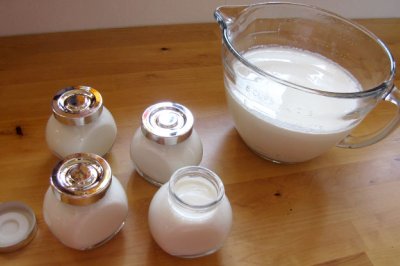
We can find in yogurt the following nutrients: calcium, phosphorus, riboflavin-vitamin B2, iodine, vitamin B12, vitamin B5, zinc, potassium, protein, and molybdenum.
These 10 nutrients alone would make yogurt as a super food in our healthy foods list which can easily enrich your diet.
Nuts
Nuts generally have a very low GI and frequently as one of the healthy foods are recommend by dietitians to be included in diets prescribed for patients with type 2 diabetes and insulin resistance problems.
Nuts contain the all important fatty acids, linoleic and linolenic acids, and omega-3 fatty acids, which are critical for growth, physical and mental development, healthy hair and skin, blood pressure control, immunological responses and blood clotting.
In addition, the fats in nuts for the most part are unsaturated fats, particularly monounsaturated fats.
This type does not elevate blood cholesterol levels like saturated fats.
Furthermore nuts supply one of the best natural sources of vitamins E, F, and G (docopherol, an antioxidant), and are rich in protein, folate, fiber, and essential minerals such as magnesium, phosphorus, potassium, copper, and selenium.
Recent studies show that consumption of nuts can reduce the risk for coronary heart disease and can lower the amount of cholesterol in the body.
Berries
One cup of strawberries contains over 100 mg of vitamin C, almost as much as a cup of orange juice.
We need vitamin C for immune system function and for strong connective tissue.
Strawberries also add a bit of calcium, magnesium, folate and potassium and only 53 calories.
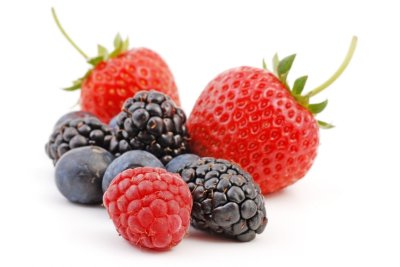
One cup of blueberries offers a smaller amount of vitamin C and minerals for only 83 calories.
The same amount of cranberries is similar, but with only 44 calories, 1 cup of raspberries offers vitamin C and potassium for 64 calories.
Those pigments that give berries their beautiful blue and red hues are also good for your health.
Berries contain phytochemicals and flavonoids that may help to prevent some forms of cancer.
Cranberries and blueberries contain a substance that may prevent bladder infections.
Eating a diet rich in blackberries, blueberries, raspberries, cranberries and strawberries, which are all healthy foods, may help to reduce your risk of several types of cancers.
Blueberries and raspberries also contain lutein, which is important for healthy vision.
Most berries are sweet and tasty enough to be served just as they are, though,
here are some ideas for serving:
You can use them for a garnish on cakes.
They are very good with yogurt and cereals.
You can make a smoothie from berries at home. Learn here how to do it!
Pomegranate
Last but not least in our list is the pomegranate.
Beyond the facts of its low calories and sugar, and that the pomegranate is a great source of vitamin B, vitamin C, fiber and potassium, its main nutritional quality is that it has more antioxidants compared to other juices and even wine.
The pomegranate helps prevent heart disease, keeps your immune system in top notch conditions, and prevents buildup of material in your arteries.
All these qualities bases its position in our healthy foods list.
The simplest way to eat it is to open it by scoring it with a knife and breaking it open, and to separate the red arils from the pill.
It can be used in salads, desserts, and both in vegetarian and meat dishes.
It also appears as juice, or in a cocktail or in salad dressing.
This list is not final, since there are much more super healthy foods which I didn't mention.
If you know about such you are welcome to tell us about them.
If I wanted to include all of these foods without skipping any of them, then I had to subject them to a special site of their own.
That was already done by my friend Alan in his site about natural health foods and supplements. Check it out.
|
Return from Diabetes Healthy Foods to Diabetic Food |